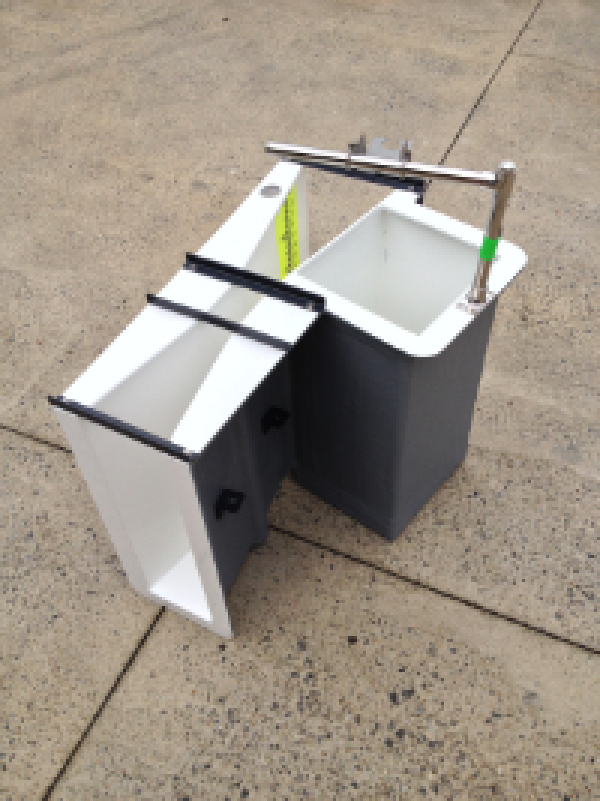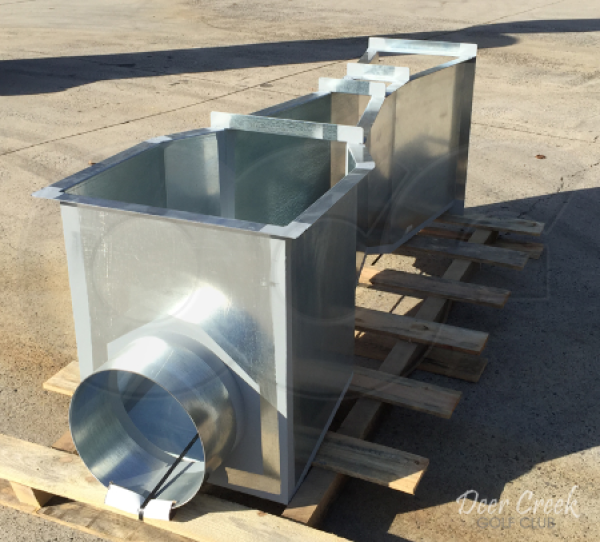This website uses a variety of cookies, which you consent to if you continue to use this site. You can read our Privacy Policy for
details about how these cookies are used, and to grant or withdraw your consent for certain types of cookies.
The 4" Parshall Flume
Of all the various sizes of Parshall Flumes that we offer, the 4-inch Parshall flume is one of the most popular. Whether in fiberglass, galvanized, or stainless steel, we get a lot of inquires for this particular size.
There’s only one problem…the 4-inch Parshall doesn’t exist.
To understand why, we need a little history.

Development of Parshall Flume Sizes
During his original development of the Improved Venturi flume from 1915 to 1922, Dr. Ralph Parshall investigated flume sizes from 12-inches to 120-inches – sizes that corresponded to the range of flows that were experienced in irrigation applications (the focus of his research).
As the years passed and the benefits of the what by then had become the Parshall flume (1930) became apparent, additional research was conducted to extend range of sizes available In 1932 Dr. Parshall published Parshall Flumes of Large Size.
Where his initial research was focused on irrigation channel flows, in Parshall Flumes of Large Size, Dr. Parshall dealt with the measurement of the larger amounts of water diverted from streams and reservoirs. Parshall flumes from 120 to 600-inches were covered (with the 120-inch size a hold-over from his initial work).
By 1945 Parshall had published his Improving the Distribution of Water to Farmers by Use of the Parshall Measuring Flume. The Parshall flume now included the 3-inch, 6-inch, 9-inch, and 18-inch sizes.
A period of almost 15 years passed before Robinson published Parshall Flumes of Small Sizes. Here the 1-inch and 2-inch sizes were finally added – rounding out the 22 sizes of Parshall flumes that we use today.
Flume Height in Small Parshall Flumes
So we can see that the development of the various sizes of the Parshall flume were not fixed until 45 years development had first begun. During that time the Parshall flume found uses far outside of its original irrigation roots. Sizes were developed as needs arose.
An outgrowth of this is when the last sizes of the Parshall flume were developed; a lack of standardization of the height of the smaller flumes became apparent.
- The 1-inch Parshall is now listed at having a height from 6-inches [15.24 cm] to 9-inches [22.86 cm].
- The 2-inch Parshall as having a height from 6-inches [15.24 cm] to 10-inches [25.4 cm].
- And the 3-inch Parshall, with the widest variation, having a height from 12-inches [30.48 cm] to 24-inches [60.96 cm].
| 3-inch Parshall (24-inch sidewalls) | 12.55 gpm [0.7918 l/s] | 834.7 gpm [52.67 l/s] |
| 6-inch Parshall | 24.32 gpm [1.534 l/s] | 1,754 gpm [110.7 l/s] |
Given the range of heights (and as an extension, flows) available for the 3-inch, the need for a 4-inch Parshall flume becomes less acute. If the height of the 3-inch Parshall flume had been fixed at 12-inches, with a maximum flow rate of 333.7 gpm, then a 4-inch Parshall flume would make sense. As it is, the greater depth 3-inch Parshall that is now common provides a maximum flow rate of 834.7 gpm – well into the flow rates accommodated by the 6-inch Parshall.
Reduced Sidewalls
Now this is not to say that the gap between a standard 24-inch high 3-inch Parshall flume and the 6-inch Parshall flume cannot be better served. Where head loss or flume depths are concerns, a reduced height 6-inch Parshall flume may very well substitute for the 4-inch Parshall flume.
In short, there is no 4-inch Parshall flume. This is partly do to the unplanned nature of the Parshall flume’s development, but partly due to the fact that the flows that might otherwise be handled by a 4-inch Parshall are in fact handled by either the higher sidewall 3-inch Parshall flume now common or the 6-inch Parshall flume (either as a standard or reduced height flume).
Sources: Parshall, R., The Improved Venturi Flume, Colorado Agricultural College, Colorado Experiment Station, 1922, Parshall, R., Parshall Flumes of Large Size, Colorado Agricultural College, Colorado Experiment Station, May, 1932, Parshall, R., Improving the Distribution of Water to Farmers by Use of the Parshall Measuring Flume, Colorado A&M College, Colorado Agricultural Experiment Station, May, 1945, Robinson, A., Parshall Measuring Flumes of Small Sizes, Technical Bulletin 61, Colorado Agricultural Experiment Station, 1960.
Related Blog Posts
Explore more insights in our blog.

LOCATIONS IN ATLANTA, GA & BOISE, ID




